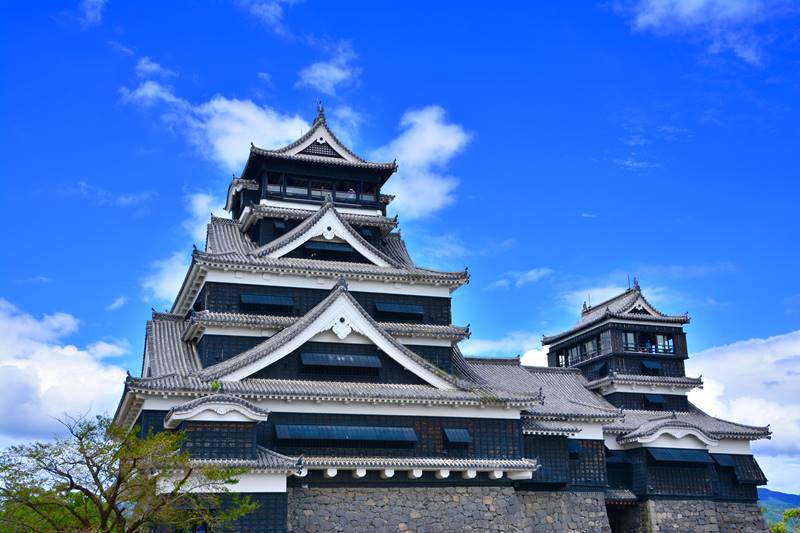This is all about Kumamoto Castle Ruins you want to know.
Every information you get on this site will be from a credible source based on Japanese history (books for reference).
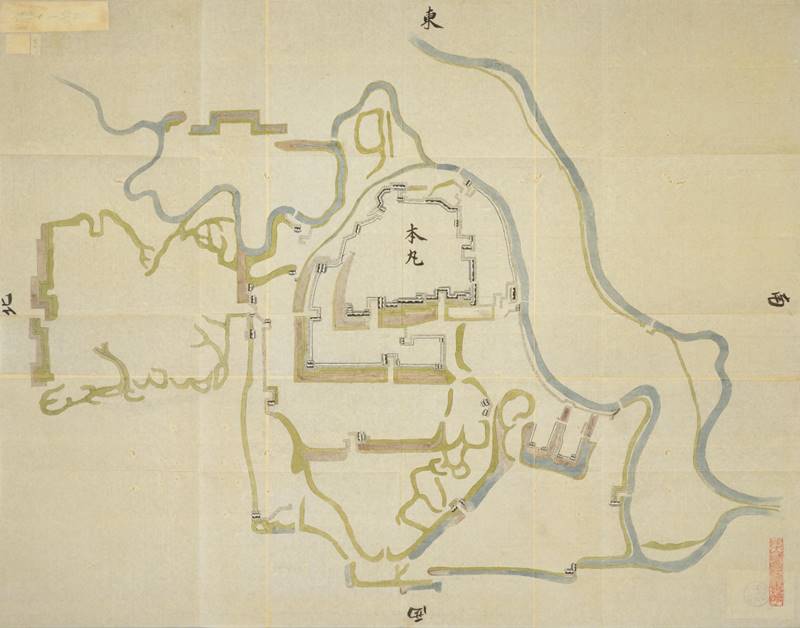
Collected by the Inagaki family, the Toba Daimyō from the mid-Edo period to the Meiji Restoration, as materials for military studies. There are about 350 illustrations, but there is no uniformity because only illustrations of castles, illustrations including castle towns, and old battlefield illustrations are mixed.
Another typical example of castle picture in the Edo period exists, "The Shōhō Shiroezu", picture of the castle and castle town that the Edo Shogunate ordered the daimyō to create and submit,aggregating military information such as the buildings inside the castle, the height of the stone wall, the width of the moat and the water depth, etc., it also details the location and shape of the castle town and the mountain river.
Profile : Kumamoto Castle Ruins
| Location | Kumamoto City, Kumamoto Prefecture |
| Also known as | Ginnan Castle |
| Type of castle | Hilltop |
| Mountain's name | Mt.Chausu |
| Elevation | ー |
| Condition | Reconstructed main keep |
| Designation | National Important cultural Properties National Historic Sites |
| Year built | 1469-1487 |
| Abolished | 1874 |
| Castle lord | Ideda Hidenobu , Kanokogi Chikakazu |
| Refurbishment lord | Katō Kiyomasa |
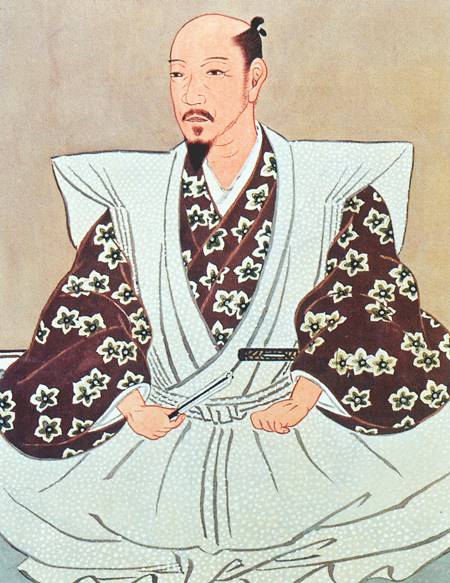
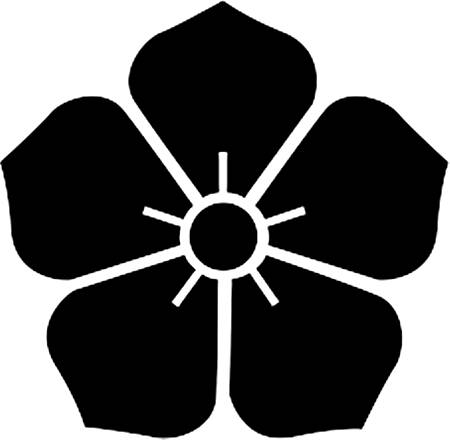
The family crest was originally created from the pattern that the emperor and the royal family put on the kimono, and the pattern was made into a fixed pattern, and the one attached to his own oxcart is said to be the beginning of the family crest. The warlords drew large crests on the flag-fingers, used to distinguish enemy views on the battlefield, and used by the generals to determine which warlords were active and how much.
Kumamoto Castle admission
admission fee : free (Free shuttle bus service am9-pm5 available (※ Loop Bus is charged)
admission time : am8-am0 reference official site
!Kumamoto Castle was severely damaged by the earthquake that occurred in April 2016. Please note that many parts are currently inaccessible.
Kumamoto Castle Google Map
Kumamoto Castle Images
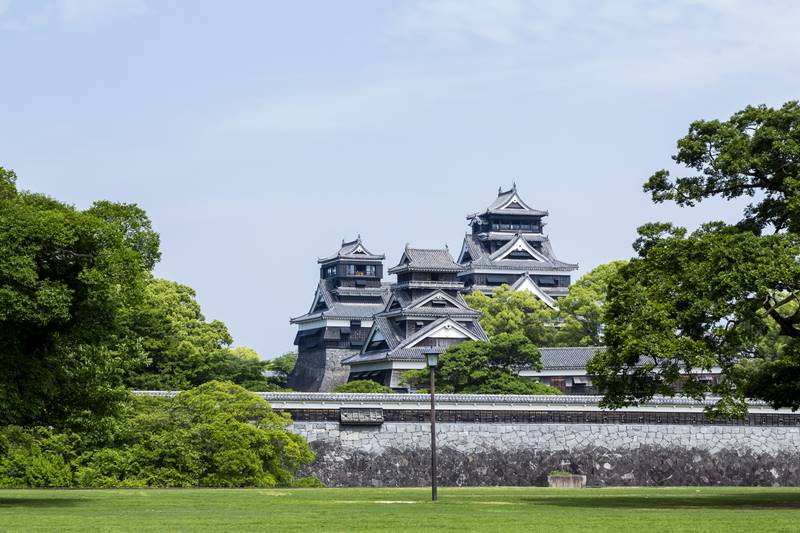
The real value of Kumamoto Castle was made known to the world during ”Satsuma Rebellion" in 1877, just 270 years after its construction. Saigo's army, led by Saigō Takamori , rose to the Meiji New Government with about 14,000 troops and surrounded Kumamoto Castle, which guarded by about 4000 government troops. Saigō's army, who was trying to capture easily, rather than dropping the castle, no one could even climb the stone wall ahead of the government's resistance deathly. At last, Government repulsed Successfully.
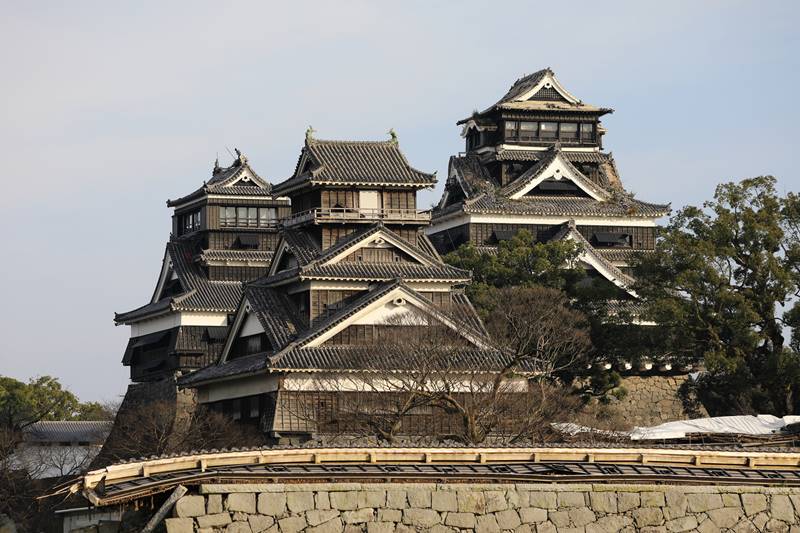
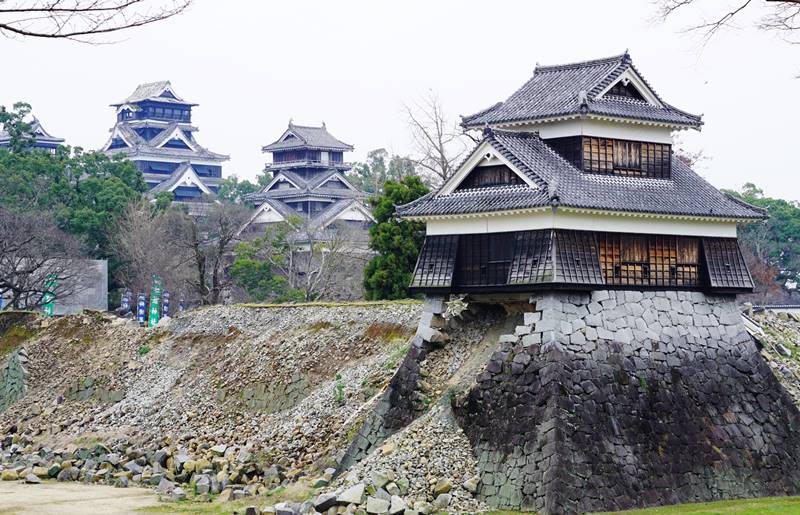
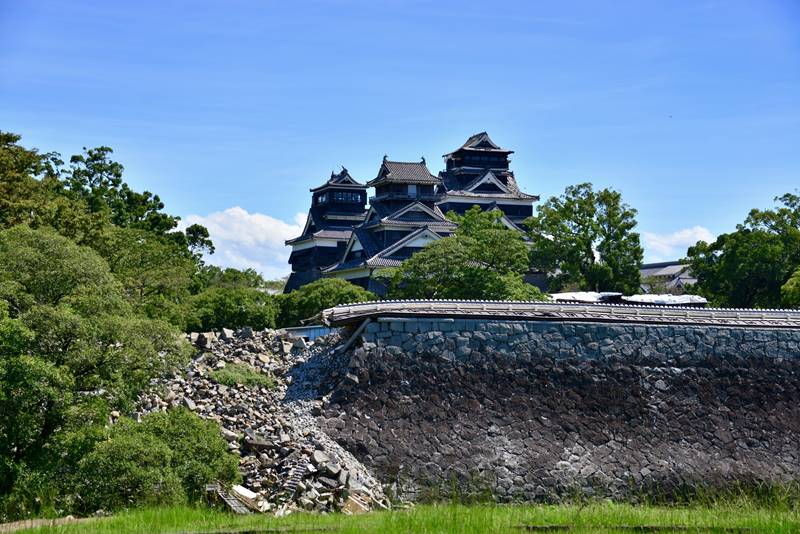
The large main keep and small one was built, and five-story turrets, such as the Uto turret, were lined with each Kuruwa. Later in the Satsuma Rebellion, most of the Honmaru burned down except for tall stone wall "The Takaishigaki", known as the Kiyomasa-style and the original 11 towers remains almost completely. The main keep, gate, and Honmaru palace have been restored, following the reconstruction of main buildings in 1960,
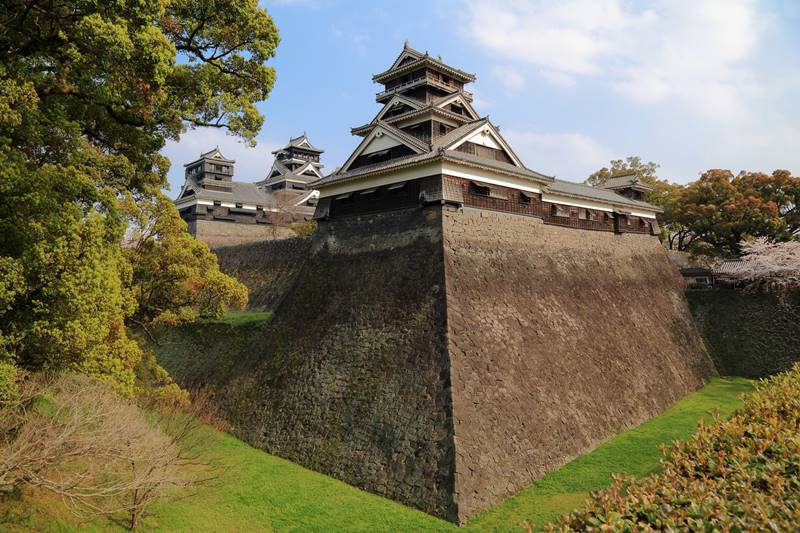
Large three level-fifth floor decorated with a straight gable following "Watari-Yagura".
It is about 19m high and is the fourth highest after the Himeji Castle, Matsumoto Castle and Matsue Castle when compared to the castle tower and towers built before the modern times. The height of the stone wall is about 30 m, is amazing.
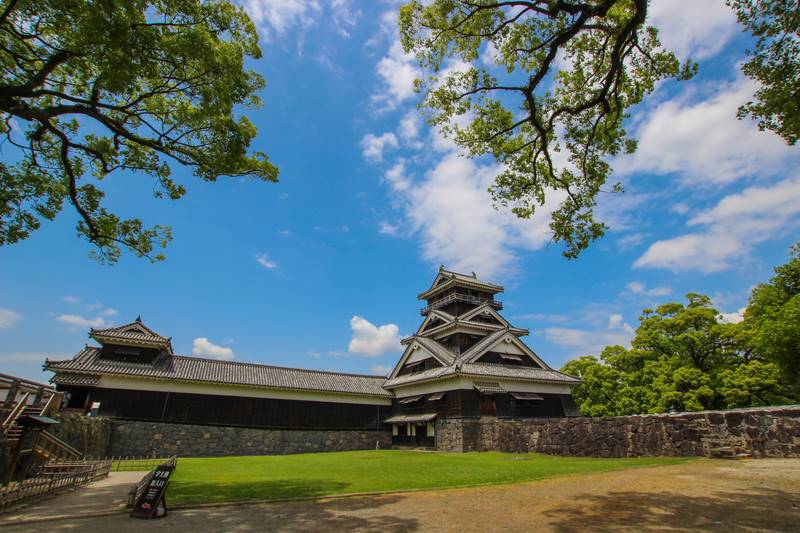
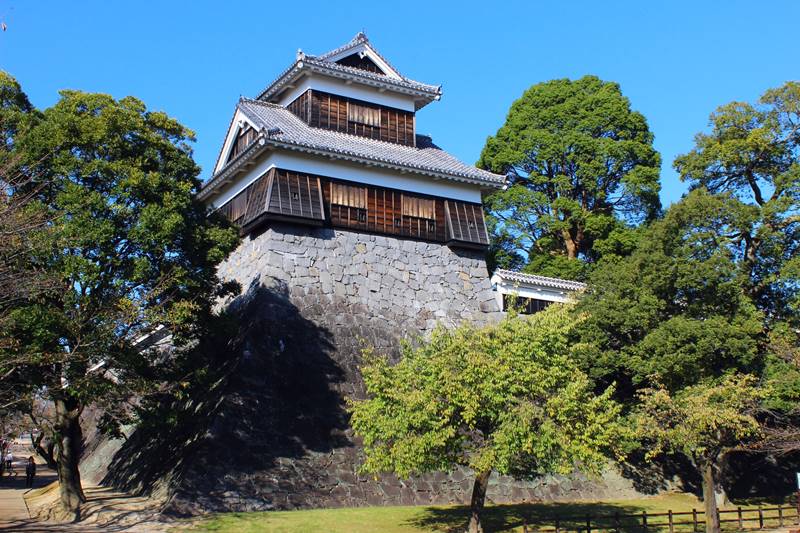
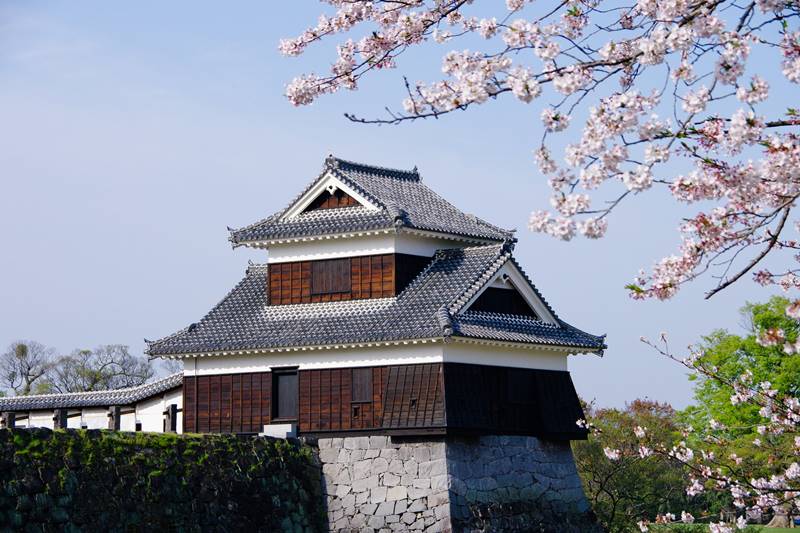
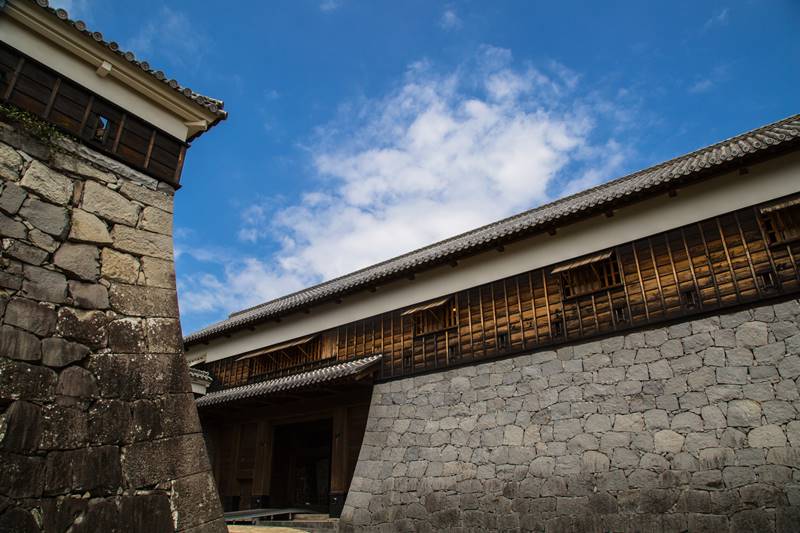
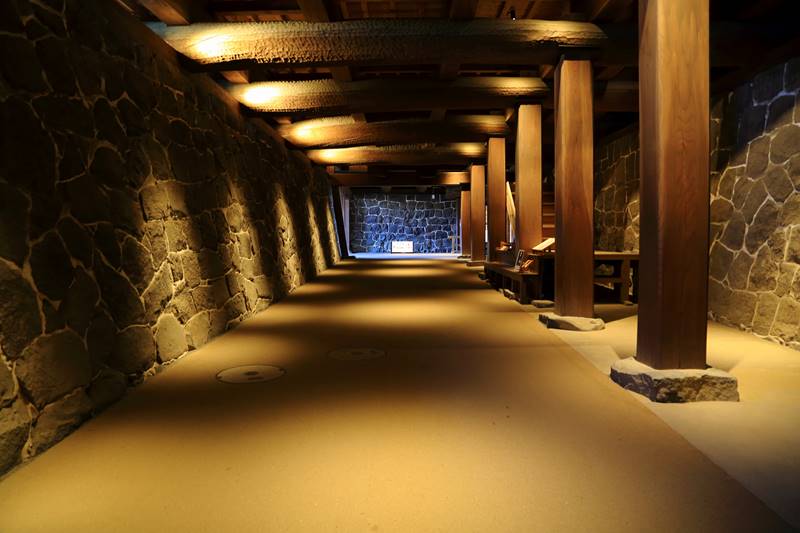
The underground passage to enter Honmaru Palace is called ”Dark Passage". The palace was built across two stone walls, so a passage had to be made underground. This is the official entrance to the palace.
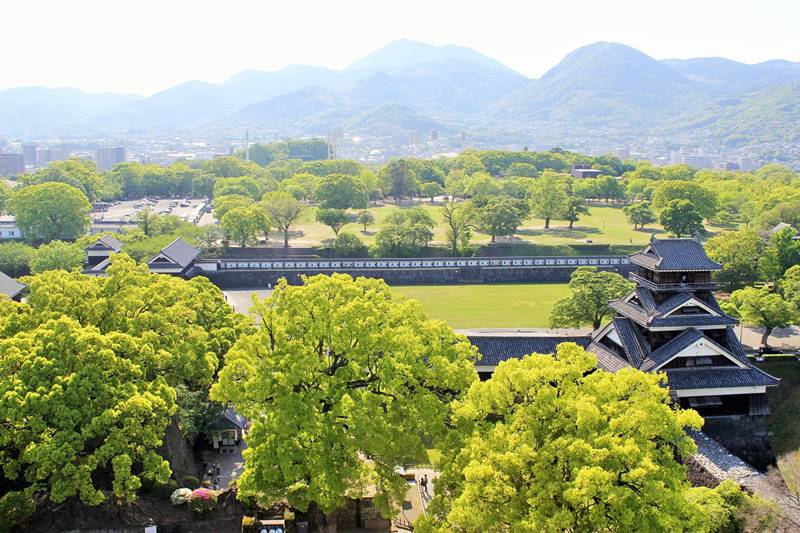


This is the most important and prestigious room in the Honmaru Palace Halls. The story of a beautiful tragedy "Ō-Shō-kun" in Former Chinese Emperor Era were drawn by a Kanou school painter on the wall of this room, seasonal plants were drawn on the ceiling.
Link-1 : Japanese three most great castle
【central japan】Nagoya Castle 【west japan】Himeji Castle 【south japan】Kumamoto Castle
Link-2 : The Impregnable Castle
【east japan】Odawara Castle 【east japan】Edo castle 【central japan】Chihaya castle 【central japan】Hachigata Castle 【west japan】Ōsaka Castle 【west japan】Yoshida-Kōriyama Castle 【south japan】Kumamoto Castle
Link-3 : Japanese seven most great stone wall
【north japan】Kanazawa Castle 【west japan】Takatori Castle 【west japan】Takeda Castle 【west japan】marugame Castle 【west japan】Oka Castle 【central japan】Iwamura Castle 【south japan】Kumamoto Castle
Link-4 : Japanese major fortress
【central japan】Nanao Castle 【central japan】Ichijōdani Castle 【east japan】 Odawara Castle 【central japan】Yamanaka Castle 【west japan】Kumamoto Castle
